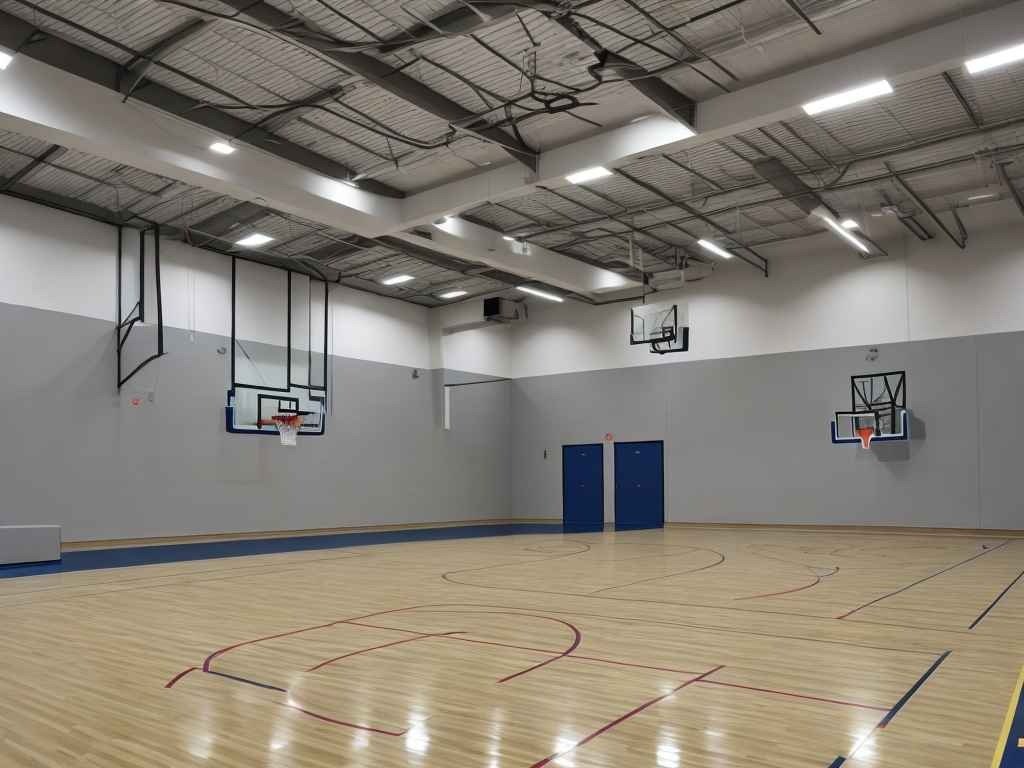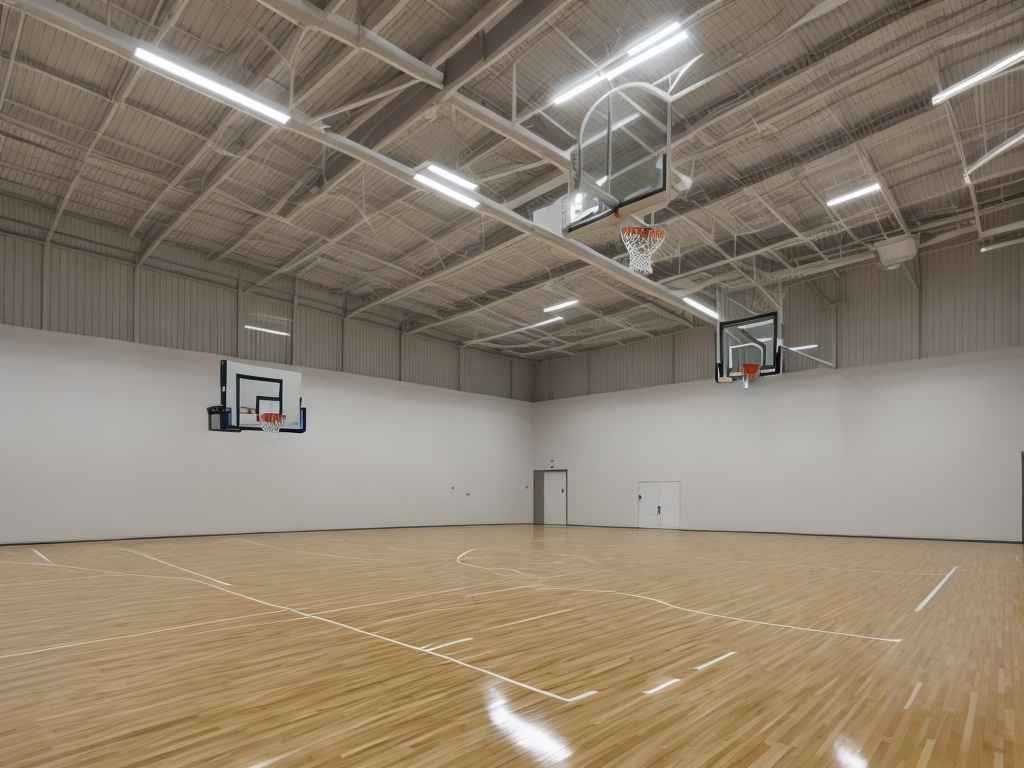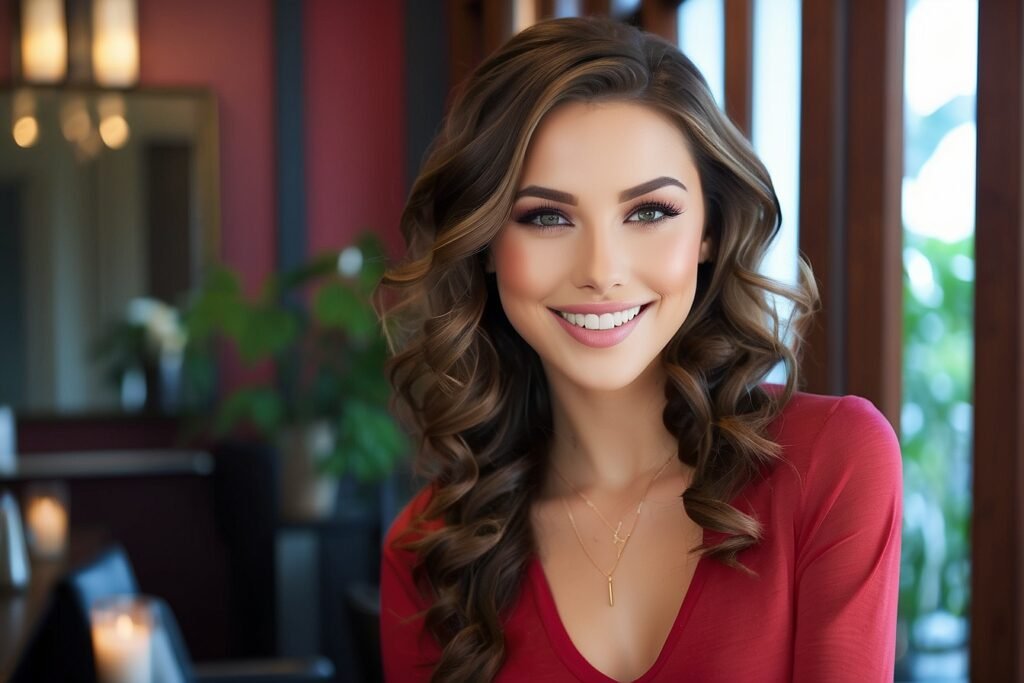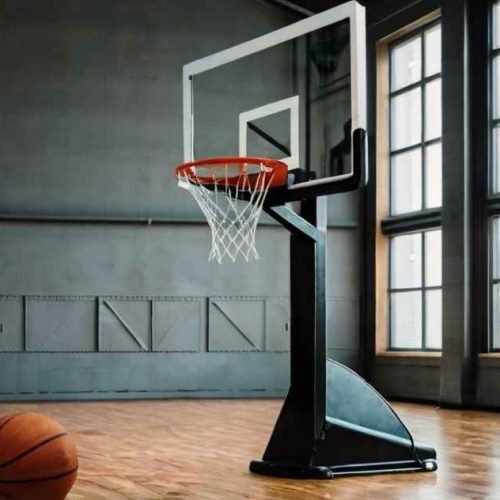Imagine playing basketball indoors under perfect lighting conditions, where every move is illuminated just right, shadows are minimal, and the ball’s trajectory is clear from every angle. Proper lighting in indoor basketball courts is not just about visibility; it enhances performance, safety, and the overall experience. Let’s dive into the essentials of indoor basketball court lighting design, a topic that combines technical precision with creative solutions.
What are Lighting Requirements?
When Indoor Basketball Court Lighting Design, it’s crucial to adhere to standards and regulations. Organizations like the International Basketball Federation (FIBA) and the Illuminating Engineering Society (IES) provide guidelines to ensure adequate lighting for various levels of play, from amateur to professional. These standards cover aspects like minimum lux levels, uniformity, glare control, and color rendering, ensuring that lighting enhances both performance and spectator experience.
The intensity of light, measured in lux, varies depending on the level of play. Recreational courts might require around 300 lux, while professional courts need at least 750 lux. Uniform lighting across the court is essential to prevent shadows and ensure that players and officials have clear visibility. Uniform lighting prevents glare and shadowed areas, which can affect gameplay and increase the risk of injury. The goal is to achieve consistent light distribution so that every part of the court is equally lit, making the game fair and enjoyable for everyone.
Explore: Indoor Basketball Court Lighting Design
Types of Lighting Fixtures
LED vs. Traditional Lighting
Advantages of LED Lighting
LED lighting has revolutionized indoor sports lighting. LEDs are more energy-efficient, have a longer lifespan, and provide better light quality compared to traditional fluorescent and high-intensity discharge (HID) lights. They also offer instant illumination without the warm-up time required by some older technologies.
Comparison with Fluorescent and HID Lighting
While fluorescent and HID lights have been used traditionally, they fall short in several areas compared to LEDs. Fluorescents can suffer from flickering, which is distracting in fast-paced sports. HID lights, while bright, consume more energy and generate more heat, which can increase cooling costs.

Fixture Placement and Orientation
Ceiling-Mounted Fixtures
Ceiling-mounted fixtures are common in Indoor Basketball Court Lighting Design. They provide widespread, even lighting and are less likely to be damaged by stray balls. The height and spacing of these fixtures are critical to achieving uniform light distribution.
Wall-Mounted Fixtures
Wall-mounted fixtures can be used to supplement ceiling lights or in courts with lower ceilings. They need to be carefully positioned to avoid casting shadows and to ensure they don’t interfere with play.
Explore: How much does an indoor basketball hoop cost?
Indoor Basketball Court Lighting Design consideration
Reducing glare is essential. Direct lighting shines light directly onto the playing surface, while indirect lighting reflects light off walls or ceilings. Indirect Indoor Basketball Court Lighting Design can reduce glare, making it easier for players to see clearly without squinting. Using shields and reflectors helps direct light where it’s needed and minimize glare. These accessories are especially important in preventing light from shining directly into players’ eyes, which can be distracting and dangerous.
The color temperature of lighting affects how colors appear on the court. A color temperature around 5000K is often recommended for sports facilities because it closely mimics natural daylight, enhancing visibility and reducing eye strain. The Color Rendering Index (CRI) measures a light source’s ability to reveal the true colors of objects compared to natural light. A CRI of 80 or higher is ideal for sports lighting, ensuring that the colors of the court, ball, and uniforms appear vivid and accurate.
Energy-efficient lighting reduces operational costs and environmental impact. LED lights are inherently more efficient, and incorporating technologies like dimmers and motion sensors can further reduce energy consumption. Sustainability in lighting design includes using recyclable materials, reducing light pollution, and integrating renewable energy sources like solar power. These practices not only benefit the environment but also enhance the facility’s reputation as a green space.
Lighting Controls and Smart Technology
Dimmable lighting allows you to adjust the brightness based on the activity taking place. For example, lower lighting levels might be suitable for practice sessions, while full brightness is needed for official games. Zoning involves dividing the court into different lighting zones, which can be controlled independently. This flexibility is useful for multi-purpose sports facilities where different lighting conditions are needed for various activities.
Motion sensors automatically turn lights on when the court is in use and off when it’s empty, saving energy and reducing costs. They also ensure that lighting is available as soon as players enter the court, enhancing convenience and safety. Smart control systems allow for remote and automated control of lighting settings. These systems can be programmed to adjust lighting based on schedules, occupancy, or specific events, providing both convenience and efficiency.

Installation and Maintenance
Safety is paramount during installation. Proper wiring, secure mounting, and adherence to electrical codes are essential to prevent accidents and ensure long-term reliability. While DIY installation might save money initially, professional installation ensures that the job is done correctly and safely. Professionals have the expertise to optimize lighting placement and comply with all relevant standards and regulations.
Regular maintenance includes cleaning fixtures to remove dust and debris, which can reduce light output. Periodic inspections help identify and address any issues before they become major problems. Common lighting issues include flickering, uneven illumination, and premature burnout. Regularly checking and maintaining fixtures can prevent these problems, ensuring consistent lighting quality.
Explore: How to clean an indoor basketball?
Case Studies and Examples
Many high school gyms have successfully upgraded to LED lighting, resulting in better visibility, reduced energy costs, and enhanced overall aesthetics. These projects often serve as models for similar facilities. Professional training facilities require the highest lighting standards to support intense training sessions and games. Case studies of these facilities highlight the benefits of advanced lighting systems and innovative design solutions.
Challenges in lighting design include managing glare, achieving uniformity, and balancing cost with quality. Learning from past projects helps avoid these issues in future designs. Effective solutions often involve a combination of high-quality fixtures, smart controls, and careful planning. Tailoring solutions to the specific needs of the facility ensures the best outcomes.
Conclusion
Designing the perfect Indoor Basketball Court Lighting Design involves a blend of technical knowledge, creative problem-solving, and adherence to standards. Proper lighting enhances performance, safety, and the overall experience, making it a crucial aspect of any sports facility. By understanding the requirements, choosing the right fixtures, and implementing smart controls, you can create an optimal lighting environment that meets the needs of players and spectators alike.
FAQs
What is the ideal lux level for an indoor basketball court?
The ideal lux level varies depending on the level of play. Recreational courts typically require around 300 lux, while professional courts need at least 750 lux.
How can glare be minimized in sports lighting?
Glare can be minimized by using indirect lighting, shields, and reflectors. Proper fixture placement and choosing lights with appropriate beam angles also help reduce glare.
Are LED lights better than traditional lights for sports facilities?
Yes, LED lights are generally better for sports facilities because they are more energy-efficient, have a longer lifespan, and provide better light quality compared to traditional lighting options.
What maintenance is required for indoor sports lighting?
Regular maintenance includes cleaning fixtures, inspecting for damage, and troubleshooting common issues like flickering or uneven lighting. This ensures consistent light quality and prolongs the lifespan of the lighting system.
Can lighting be customized for different events and activities?
Yes, modern lighting systems can be customized using dimming, zoning, and smart controls to adjust the lighting for different events and activities, enhancing versatility and user experience.




